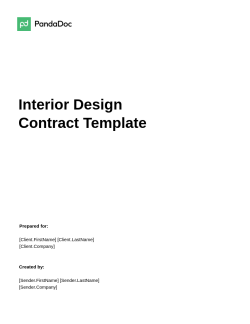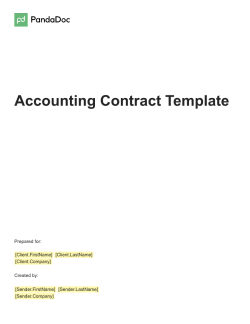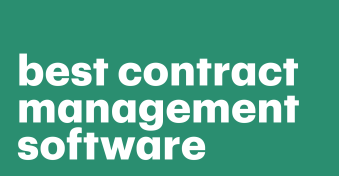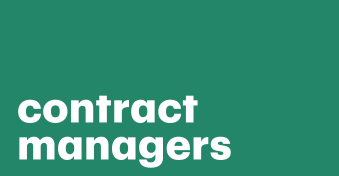Negotiating with clients, vendors, or contractors can be a delicate process that requires patience, preparation, and skill in order to create an agreement that is mutually beneficial for both parties.
It’s an essential part of the business process.
Knowing how to negotiate business contract terms can help you get the best deal for your company while also creating win-win scenarios with other organizations.
What is contract negotiation?
Contract negotiation is the process of negotiating an agreement between two or more parties.
It typically involves discussing the terms and conditions of an agreement as well as determining a course of action to resolve any disputes that may arise prior to reaching a new, legally binding agreement.
Before the document is signed or e-signed, you can negotiate terms, i.e., change parts of the contract, until everyone in the business relationship is in agreement.
Can I renegotiate a contract’s terms?
Yes, you can also renegotiate terms during the contract renewal process, during scheduled review periods, and — in some cases — even during the middle of a contract (called an intra-deal negotiation).
Terminating a contract is also a natural part of a contract’s lifecycle.
It’s important to know your priorities and look for opportunities to negotiate or renegotiate terms if your needs have changed or if you know that the needs of the other party have shifted.
Contract negotiation is all about aiming for a mutually beneficial agreement (more on that in the next section).
What are the main goals of the negotiating process?
The goal of any good-faith contract negotiation is to reach equitable and beneficial terms for all parties involved.
To do this, negotiators must identify their respective interests, assess alternatives, and then come to an agreement on the contract terms.
That’s why it is strongly recommended to set goals that can focus your efforts and help teams arrive at appropriate outcomes while negotiations are underway — every contract has an underlying goal, and knowing what that is will help discussions progress more easily.
With that in mind, ask yourself if your contract negotiation goals can stand up to the following questions:
- Have I clearly explained all the terms and conditions of my (re)negotiation proposal?
- Are the goods or services I’m providing appropriately defined?
- Did I include a payment schedule, financing terms, and total costs in my compensation?
- Have I set reasonable expectations for the business relationship going forward?
- Are all the required renewal dates, effective dates, and completion dates clearly stated?
- Did I address any liabilities and risks associated with the change of contract?
In the following sections, we’ll give you the tools you need to answer those questions with a resounding “Yes!”
How to negotiate a contract: techniques, tactics, and a step-by-step process
Let’s discuss the details of contract negotiation. Along the way, we’ll share some pro tips and insights to help make your next negotiation go smoothly.
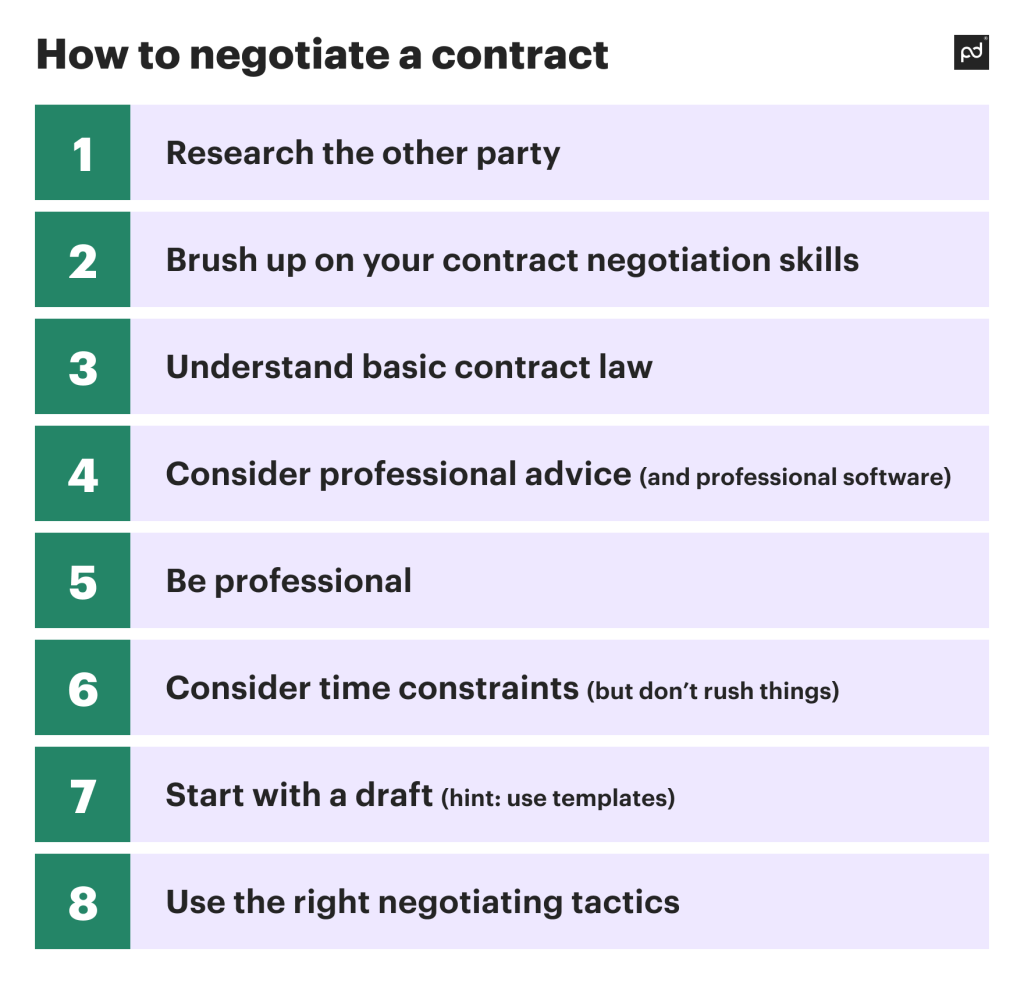
1. Research the other party
Understanding the other party’s goals, strengths, weaknesses, and any relevant external factors can significantly enhance your effectiveness at the negotiation table — whether that means in person or online via a virtual data room.
Doing so fosters trust, respect, and rapport with the other party, helping to establish common ground and mutual interest. That’s essential to building long-term relationships and achieving desired outcomes.
Plus, the more you know about the person you’re speaking to, the less likely they are to surprise you!
Review past negotiations
Try to find information on what kind of agreements they reached, whether they’re self-serving, and what negotiation styles they prefer.
Adjust your own contract proposal or negotiation style into something they were previously receptive to.
Obtaining information about the other party will blow your meeting out of the park.
It will also help improve your relationships with them in the long run.
If possible, ask other employees or clients for input on how you can improve your proposal.
This will not only give you more insight into key stakeholders’ styles of negotiation but also how they act during negotiations.
Are they aggressive? Do they ask questions with hidden meanings? Are there any catches?
Look for any potential weak spots and use them to your advantage.
Search the Internet
Leverage social media, especially LinkedIn, and professional associations to uncover valuable insights about a person’s career and objectives, and consider reaching out to their colleagues for additional perspectives.
Don’t assume it’s unprofessional to spark a casual conversation! Sometimes, speaking about your interests can help you establish common ground.
Prepare for questions and concerns
Before you enter into the active phase of the negotiation process, you need to prepare for all the important questions and concerns the other side might have — and especially the tricky ones.
For example, if you’re selling a product or service, you should anticipate concerns about pricing, contract terms, delivery timelines, quality, the eventual ROI the client can expect, and so on.
You may also get more difficult questions, such as:
- What happens if we’re not happy with what you deliver?
- Can we end the contract early?
- Can you show us proof of the quality of your work?
- What discounts can you offer?
- Can we speak to other clients of yours?
Assess risks
Evaluate any potential risks for yourself and the other party, and what risk mitigation strategies you could put in place to protect everyone’s interests — and include them in the contract terms. For example:
- What happens if you don’t get paid for your work?
- What happens if you’re unable to deliver on time?
- What happens in the case of a force majeure?
2. Brush up on your contract negotiation skills
Negotiation is a skill that you can learn and improve with practice. Here are a few key tactics to brush up on before stepping into the negotiation room:
Active listening
Active listening is an effective way of communicating that involves not only hearing what the other person is saying but also paying attention to verbal and non-verbal cues, and giving them appropriate feedback to show that you understand what they mean.
It’s an important skill to have when engaging in contract negotiations, as it ensures that both parties clearly understand each other’s needs, wants, and expectations during the negotiation process.
By actively engaging with the speaker, repeating back what you’ve heard them say, and asking questions to further clarify, while remaining cognizant of nonverbal cues (such as body language), you can gain valuable insight into the feelings and intentions of your negotiating partner.
Use that knowledge to steer your negotiation toward an amicable conclusion.
Communication
Proper communication skills distinguish great negotiators from mediocre ones. Make sure to be assertive but not aggressive.
Use your body wisely; gesticulation can be a large part of communication. Aside from that, you should build rapport with your counterpart — you are far more likely to reach an agreement if you spend some time getting to know each other.
Ask open-ended and leading questions to get the conversation going, and be open and forthright when the other party asks you questions.
Persuasion
You’ll likely need to influence and persuade the other party to see why the deal you’re proposing is beneficial to everyone.
Avoid coming off as aggressive and needy. Instead, use persuasion tactics like the scarcity principle, data and statistics, or social proof to persuade negotiators and win them over.
Adaptability
The ability to adapt is fundamental for navigating the dynamic nature of each negotiation, ensuring you’re ready for any shift in discussions and ready to transform potential losses into win-win outcomes.
Before the negotiation starts, explore different arguments and positions that your negotiators might take. This way, you’ll be ready to respond to everything clearly.
Improving these skills will make you a stronger negotiator and lead to more successful negotiations.
You can also find a wide variety of great courses on negotiating, such as the Harvard Negotiation Mastery Course.
3. Understand basic contract law
There’s a good reason why most organizations staff legal teams: law is complicated. Knowing where to start can save you time. And a lawyer can help you determine if your contract is legally binding.
In the United States, both state and federal law play a role in how contracts are interpreted and upheld.
State-controlled contracts are governed by the common-law system, which relies on existing legal precedents established in prior court rulings as a basis for future decisions.
Because the law is constantly evolving, keeping up with the changes in case law is both important and time-consuming.
The Uniform Commercial Code (UCC) controls contracts that handle the sale of goods.
This standardized collection of guidelines is incorporated with state-related sales laws.
A contract is made when there is:
- An offer
- An acceptance of an offer
- Enough consideration to make the contract valid
You may want to brush up on some contract terms, like procurement (to persuade someone to do something), or a contract bid (the supplier’s quote).
Knowing the law — or getting expert help if needed — will not only assist with negotiation tactics, it may help you distinguish a good deal from a potentially devastating contract.
4. Consider professional advice (and professional software)
Legal negotiation isn’t always frustrating, but it can be.
It may be difficult for negotiators to fully understand the nuances and terms of contracting when they themselves specialize in other areas — or are fluent in all the details of contract terminology.
Guidance from a law firm isn’t your only option, although it should be a serious consideration.
Prior to jumping into contract negotiations, consider these roles and the assistance they can provide:
- Contract lawyers: Lawyers specializing in contract law can draft and review contracts and protect your rights. They can offer legal advice if you need clarification of a legal term or legal language.
- Business advisors: Specialists that offer hands-on help, support, and advice for business areas. Hire one to ensure your business needs are met in a contract.
- Governing unions and bodies: Some contract or business questions can be answered by a government website. And If you’re negotiating with a company that’s unionized, you can speak to a representative directly about drafting a legally binding union contract.
You can also use professional software designed to handle everything related to negotiating a deal from a single platform — creating, modifying, signing, and storing contracts. This enables you to expedite the entire contract negotiation process and make it easier for everyone.
To further expedite workflows, use well-structured templates when drafting contracts.
5. Be professional
Like it or not, most people will judge our professionalism based on appearances.
It’s still important that you speak respectfully to the negotiator and come prepared, but you won’t get far if your appearance doesn’t match what you can offer.
Counterparties in your negotiation have to make a quick judgment about your personality, trustworthiness, and skills.
If you’re professional and self-assured, you’re more likely to come out on top.
You can improve your negotiation chances by checking off the following:
- Dress in business-appropriate attire that makes you feel confident.
- Sit up straight with your shoulders squared.
- Keep your hands and feet still.
- Make eye contact with whomever you’re speaking to.
- Observe the other party’s body language and offer concessions if things aren’t going well.
6. Consider time constraints (but don’t rush things)
Keep an eye on any time limitations, yours and everyone else’s, but also don’t speed through the process.
Often, negotiators feel uncomfortable dealing with contracts and may want to rush to get it over with. However, doing so comes with major risks.
A poor contract can lead to a lot of misunderstandings, and, if you’re on the end of a bad deal, you may be signing away years of profits and productivity in pursuit of unsustainable deadlines.
To avoid this, make sure you understand all timelines and thoroughly review all details of the contract.
Both sides must understand each other’s goals, needs, and time-bound objectives before signing on the dotted line.
Think of negotiation as a chance to add value and collaborate, not to “beat the other side.” Having a fresh take on negotiating may help you relax and even enjoy the experience.
7. Start with a draft (hint: use templates)
Templates let you create a legally binding contract in minutes.
Contracts, in general, are very comprehensive and full of legal information.
If you’re someone who’s not readily familiar with all the peculiarities, you’ll have a hard time drafting a contract on your own.
As we mentioned above, you can always consider enlisting the help of lawyers to draft contracts for you. But legal counsel can quickly become expensive when drafting a contract entirely from scratch.
In many cases, modifying a ready-made contract template to fit the needs of your business is a more effective option.
While preparing a template, you will get most of the hard work done before the negotiation even starts.
And if you are using legal counsel, be sure you have them review any template you create or modify.
Keep in mind that laws vary by locale and region, so you’ll need to make sure that your terms are in compliance with those regulations.
We have over 400 contract templates in our gallery, some of which include:
Outsourcing Services Contract Template
Interior Design Contract Template
Accounting Contract Template
Freelance Graphic Design Contract Template

Freelance Graphic Design Contract Template
Used 8136 times
3.6 rating (19 reviews)
You can use software to draft complex contracts that look professional and streamline the negotiation process.
Just fill out the gaps with your business and service information, and you’re good to go.
8. Use the right negotiating tactics
To negotiate agreements successfully, you’ll need to have a few negotiating tactics up your sleeve.
Use these common contract negotiation strategies that are proven to work:
Compartmentalize
Avoid an “all or nothing approach” when negotiating because your counterparties probably won’t agree with all of your terms. Pass this roadblock by breaking the negotiation into sections — by doing so, you’ll reach more solutions in different parts.
For example, let’s say your company and the other party can’t agree on whether or not to collaborate with an influencer on a product launch, and this part is blocking the whole negotiation process from moving forward.
When you reach an impasse, consider tabling that issue and revisiting it after you’ve found common ground on a different topic. This way, you can make a fresh counteroffer when the timing is right.
Know your priorities — and seize the reins
The phrase “controlling the agenda” means creating an advantage in the negotiation by governing the pace of how things are proceeding.
If you’re crystal clear on your priorities and set yourself up as the moderator, you can control many aspects of the meeting, such as:
- The timing and location
- Key topics to discuss
- The order in which those topics are discussed
This will give you an edge: the party that sets the agenda ultimately has more control over how issues are resolved.
And if you’d like further reading on this subject, an older article in the Harvard Business Review provides some timeless tips on how to control the negotiation before it even begins.
Use facts, not emotions
Reduce emotion in negotiations by concentrating on the other party’s motives and using neutral language to maintain a professional stance. This lowers the risk of conflict and will generally lead to better outcomes than a heated discussion.
For example, rather than saying, “I believe that approach will create risk,” use impersonal language phrases that state facts. Say instead: “If we agree to these terms, both companies will be at risk.”
Aim for a mutually beneficial agreement (a.k.a., ask for what’s fair)
Align the terms of a contract with industry standards — and make sure the agreement is beneficial to everyone involved.
This helps build trust and respect.
The other party will be aware that not only you’re asking for what’s fair, but you’re also aligned with others in your field and industry.
For more insights, check out our top 6 contract negotiation tips.
Negotiate and draft contracts efficiently with the right tools
When it comes to contracts, PandaDoc offers excellent collaboration and negotiation opportunities that extend well beyond what you’ll get in Microsoft Word or Google Docs.
Using our contract management software, you can easily create and manage contracts that are legally binding and compliant once signed, all thanks to our:
- Ready-to-use professional templates
- Intuitive and collaborative contract workflows
- eSignature and document repository features
You’ll never even need to leave the app when negotiating contracts. Our redlining and real-time commenting tools are built to speed up the contracting process, eliminating the need for countless emails and phone calls.
You can also view, comment on, and accept changes in one place.
Check out other features you’ll receive:
- Speed, efficiency, and security: Our top priority is freeing up your time for other tasks. With our library of pre-approved clause choices, you can build an expert-level contract in minutes, all within a secure environment.
- Streamlined processes: You can streamline your sales operations by incorporating approval workflows, freeing yourself of burdensome tasks.
- Instant collaboration: Communication is important for business success. PandaDoc makes sure you and your team keep the conversation flowing with chat functionality.
- Paperless workflows: Our digital contract solution removes the need for binders and paper, ensuring contract management has never been easier.
We hope that our guide has helped you learn how to prepare and negotiate a business contract quickly and efficiently, and do so while not compromising on quality.
If you’re prepared, knowledgeable, and confident, you’ll quickly become a negotiation master!
And PandaDoc is here to help lay the groundwork for successful contract negotiations. At present, more than 12,000 accounts have found contract and negotiation nirvana.
Sign up for a free demo and start leveling up your contract negotiations!
Disclaimer
PandaDoc is not a law firm, or a substitute for an attorney or law firm. This page is not intended to and does not provide legal advice. Should you have legal questions on the validity of e-signatures or digital signatures and the enforceability thereof, please consult with an attorney or law firm. Use of PandaDocs services are governed by our Terms of Use and Privacy Policy.
Originally published October 5, 2021, updated August 16, 2024

